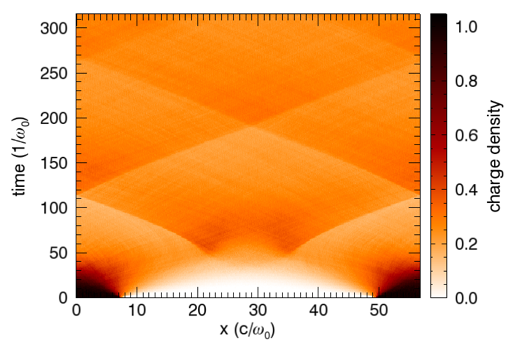Ogden Jones (17-ERD-118)
Executive Summary
Our research focuses on enabling more-predictable, better-performing laser target capsules (hohlraums) that incorporate foam fill, by improving the ability to model laser- and x-ray-heated foams accurately. Results also support the nation's stockpile stewardship and energy security efforts by advancing the science of indirect-drive Inertial Confinement Fusion.
Project Description
For indirectly driven inertial-confinement laser fusion, the goal is to compress a target pellet of hydrogen isotopes to more than 100 million degrees Celsius and to pressures exceeding 200 billion times the Earth’s atmosphere, whereby the hydrogen isotopes fuse and release more energy from the reaction than was used to drive it. Traditionally, the target capsule (hohlraum) has been made from solid materials and filled with gas (usually helium) to tamp wall expansion, which is required because wall spot motion leads to dynamic symmetry swings that can reduce the ignition margin. However, recent modern hohlraum designs are using foams to control wall motion and laser–plasma interactions. Two approaches are currently being studied: metal foams to line the hohlraum wall, thus reducing wall expansion and laser spot motion, or low-density foams to fill most of the rest of the hohlraum volume. We are investigating methods to improve our ability to model laser- and x-ray-heated foams accurately. In this project, we are performing detailed calculations that resolve the foam structure using radiation-hydrodynamic (RH) and particle-in-cell (PIC) calculations. These calculations will guide the development of a reduced model for foams for RH calculations of hohlraums. We will obtain experimental data on laser-heated foams to test the reduced model and modify it as needed.
The use of foams has the potential to mitigate several of the problems associated with cylindrical gas-filled hohlraums for indirectly driven laser fusion. Precisely calculating the conditions of laser-heated foams will be invaluable in predicting the possible onset of laser–plasma interaction losses and developing mitigation strategies. Good foam models are also necessary to correctly calculate wall expansion and x-ray source location. This project will provide hohlraum designers with an experimentally validated model of foams to use in radiation-hydrodynamic calculations to enable fair assessment of different fill and wall options. We expect to enable more-predictable, better-performing laser hohlraums that incorporate foam fill.
Mission Relevance
Our research contributes to the NNSA goal of understanding the condition of the nuclear stockpile as well as advancing the science, technology, and engineering competencies that are the foundation of the NNSA mission. The work also supports the Lawrence Livermore high-energy-density science core competency through an enhanced understanding of high-energy-density physics and improved prospects for demonstrating thermonuclear ignition on the Laboratory's National Ignition Facility with the use of advanced manufacturing of hohlraum target capsule foams.
FY17 Accomplishments and Results
In FY17 we (1) performed linked molecular dynamics and particle-in-cell calculations of realistic foam structures; (2) used these calculations along with radiation-hydrodynamic calculations to design experiments on OMEGA or Livermore’s Jupiter laser facility to test aspects of these detailed calculations that we can measure, and submit proposals for experimental time at these facilities; and (3) began experimenting with additive manufacturing techniques to produce various types of foams we wish to test.
   






